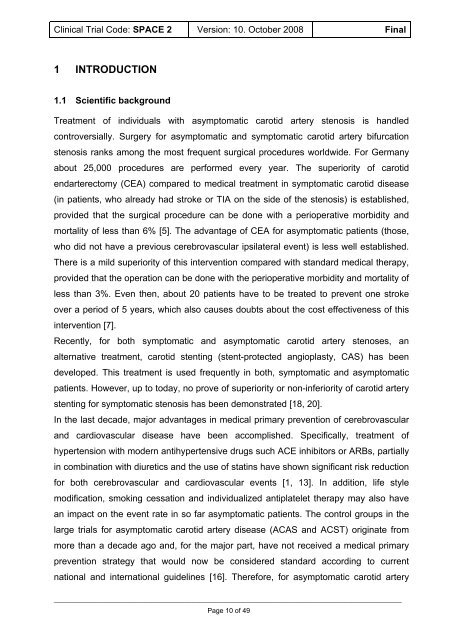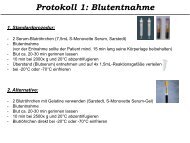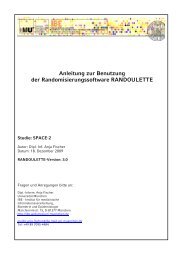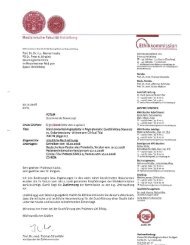CLINICAL TRIAL PROTOCOL SPACE 2 Stent ... - SPACE-2 Studie
CLINICAL TRIAL PROTOCOL SPACE 2 Stent ... - SPACE-2 Studie
CLINICAL TRIAL PROTOCOL SPACE 2 Stent ... - SPACE-2 Studie
Create successful ePaper yourself
Turn your PDF publications into a flip-book with our unique Google optimized e-Paper software.
Clinical Trial Code: <strong>SPACE</strong> 2 Version: 10. October 2008 Final<br />
1 INTRODUCTION<br />
1.1 Scientific background<br />
Treatment of individuals with asymptomatic carotid artery stenosis is handled<br />
controversially. Surgery for asymptomatic and symptomatic carotid artery bifurcation<br />
stenosis ranks among the most frequent surgical procedures worldwide. For Germany<br />
about 25,000 procedures are performed every year. The superiority of carotid<br />
endarterectomy (CEA) compared to medical treatment in symptomatic carotid disease<br />
(in patients, who already had stroke or TIA on the side of the stenosis) is established,<br />
provided that the surgical procedure can be done with a perioperative morbidity and<br />
mortality of less than 6% [5]. The advantage of CEA for asymptomatic patients (those,<br />
who did not have a previous cerebrovascular ipsilateral event) is less well established.<br />
There is a mild superiority of this intervention compared with standard medical therapy,<br />
provided that the operation can be done with the perioperative morbidity and mortality of<br />
less than 3%. Even then, about 20 patients have to be treated to prevent one stroke<br />
over a period of 5 years, which also causes doubts about the cost effectiveness of this<br />
intervention [7].<br />
Recently, for both symptomatic and asymptomatic carotid artery stenoses, an<br />
alternative treatment, carotid stenting (stent-protected angioplasty, CAS) has been<br />
developed. This treatment is used frequently in both, symptomatic and asymptomatic<br />
patients. However, up to today, no prove of superiority or non-inferiority of carotid artery<br />
stenting for symptomatic stenosis has been demonstrated [18, 20].<br />
In the last decade, major advantages in medical primary prevention of cerebrovascular<br />
and cardiovascular disease have been accomplished. Specifically, treatment of<br />
hypertension with modern antihypertensive drugs such ACE inhibitors or ARBs, partially<br />
in combination with diuretics and the use of statins have shown significant risk reduction<br />
for both cerebrovascular and cardiovascular events [1, 13]. In addition, life style<br />
modification, smoking cessation and individualized antiplatelet therapy may also have<br />
an impact on the event rate in so far asymptomatic patients. The control groups in the<br />
large trials for asymptomatic carotid artery disease (ACAS and ACST) originate from<br />
more than a decade ago and, for the major part, have not received a medical primary<br />
prevention strategy that would now be considered standard according to current<br />
national and international guidelines [16]. Therefore, for asymptomatic carotid artery<br />
_______________________________________________________________________________________________________<br />
Page 10 of 49





